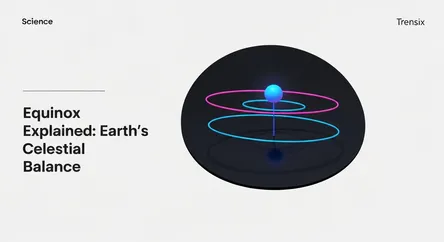Science
Equinox Explained: Earth's Celestial Balance

Discover the equinox, the twice-yearly event when day and night are nearly equal, marking the start of spring and autumn. Learn why it happens.
What is it?
An equinox is a specific moment in Earth's orbit when the Sun is positioned directly above the equator. This celestial event occurs twice a year, around March 20th (the vernal or spring equinox) and September 22nd (the autumnal equinox). During an equinox, the planet's axial tilt is neither inclined toward nor away from the Sun. As a result, both hemispheres receive sunlight almost equally, and the lengths of day and night are nearly the same all across the globe. These moments mark the astronomical beginning of spring and autumn, depending on your hemisphere.
Why is it trending?
Equinoxes consistently trend online twice a year as they signify a major seasonal shift. Public interest peaks as people search for the exact dates and times, eager to welcome spring or autumn. The events often coincide with cultural festivals and ancient traditions, from Nowruz (Persian New Year) to celebrations at historical sites like Stonehenge and Chichen Itza, which are architecturally aligned with the equinox. Media coverage of these phenomena and the noticeable change in daylight hours fuels public curiosity and conversation, making it a recurring popular topic.
How does it affect people?
The primary effect of an equinox is the official change of seasons. The spring equinox brings longer daylight hours and warmer temperatures, influencing agriculture, wildlife behavior, and often improving human mood and activity levels. The autumnal equinox signals the opposite: shorter days and a transition to colder weather. For millennia, cultures have celebrated these moments as times of balance, renewal (spring), or harvest and preparation (autumn). They serve as a powerful, global reminder of Earth's cycles and our connection to the cosmos, influencing everything from farming schedules to spiritual practices.